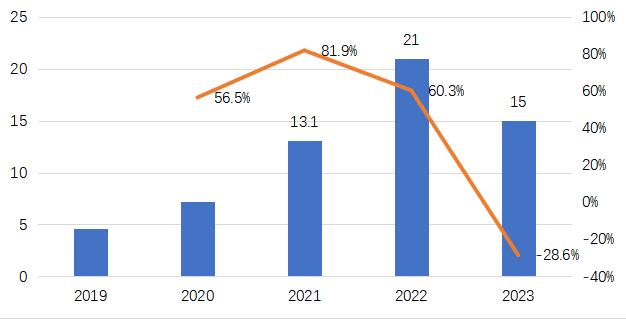The focus of the new round of production capacity competition in the lithium battery industry has shifted from emphasizing large-scale layout to key factors such as quality performance, stable safety, production efficiency, and manufacturing costs.
On one hand, these leading lithium ion battery manufacturers in China are advancing intelligent extreme manufacturing required for advanced lithium battery production, with core demands including extremely precise requirements, extremely fast speed, extremely high consistency, extremely low defect rate at the ppb level, batch customization, extremely high safety, and extremely low cost.
On the other hand, constructing a digital blueprint for intelligent extreme manufacturing, connecting the data chain of various production links, and achieving traceability of defect data in continuous production processes, has become a key development direction for battery companies to truly achieve digital and intelligent production.
As a result, as a key link in enabling intelligent manufacturing of lithium batteries, the long-term market demand for lithium battery machine vision inspection systems is clear. The logic is:
Firstly, the extensive use of machine vision in lithium battery equipment has significantly improved the quality control of lithium batteries, achieving quality improvement, cost reduction, and efficiency increase. Full-process machine vision deployment is also an inevitable choice for lithium battery production enterprises to move towards large-scale intelligent manufacturing, solving quality and efficiency problems and upgrading from ppm to ppb.
Secondly, the current difficulty that battery factories face in improving control over the production process during transformation and upgrading still lies in the connection of core data and core software.
The extensive application of vision systems in the lithium battery production process can help battery companies achieve traceability of defect data in continuous production processes. In the future, with the core software mining, processing, and analyzing these data, decisions can be made through data to achieve transformation and upgrading of the process flow and product quality, realizing digital and intelligent production.
It needs to be recognized that in 2023, China's lithium battery industry experienced an adjustment period. The growth rate of new energy vehicle production and sales slowed down, and the structural contradictions between the battery industry chain and the whole vehicle industry chain led to a slowdown in the overall expansion of battery production.
Affected by this, the market for lithium battery machine vision inspection systems also showed a decline in growth rate.
According to data from the High-Tech Industrial Research Institute (GGII), the market size of China's lithium battery machine vision inspection systems in 2023 was 1.5 billion yuan, a year-on-year decline of 28.6%. The main reasons are:
1) In 2023, the expansion of domestic lithium battery companies was significantly slowed down, reducing the demand for new equipment;
2) In 2023, the price competition for lithium battery machine vision inspection systems and their upstream components was fierce, and the price of power battery cell projects fell by more than 20% year-on-year.
Note:
1) The market size of lithium battery machine vision inspection systems only includes the measurement and defect detection needs in the lithium battery production process and the module PACK assembly process, and does not include the needs for vision positioning and barcode recognition in automated logistics equipment;
2) Only the income of independent third-party lithium battery machine vision inspection system companies is counted, excluding the self-produced and self-used parts of lithium battery companies and the self-produced and self-supplied parts of lithium battery production equipment companies.
Data source: High-Tech Industrial Research Institute (GGII), May 2024

GGII predicts that in 2024, the "reshuffle" of the lithium battery industry will continue, and the focus of new capacity additions of leading battery companies will be overseas. Machine vision companies that achieve deep binding with leading battery companies, have supporting overseas experience, and have overseas resource channels will be able to better navigate the industry cycle and achieve continuous growth in performance.
The industry's optimistic expectation, combined with the global demand for lithium batteries, predicts that in the short term by the second half of 2025, and in the medium term by 2026, the expansion of lithium batteries will enter a new favorable cycle, which will also drive the continuous growth of demand for lithium battery machine vision systems.
---
Please note that this translation is a direct conversion of the content provided and may require further refinement for idiomatic expression and technical accuracy in specific industry contexts.



